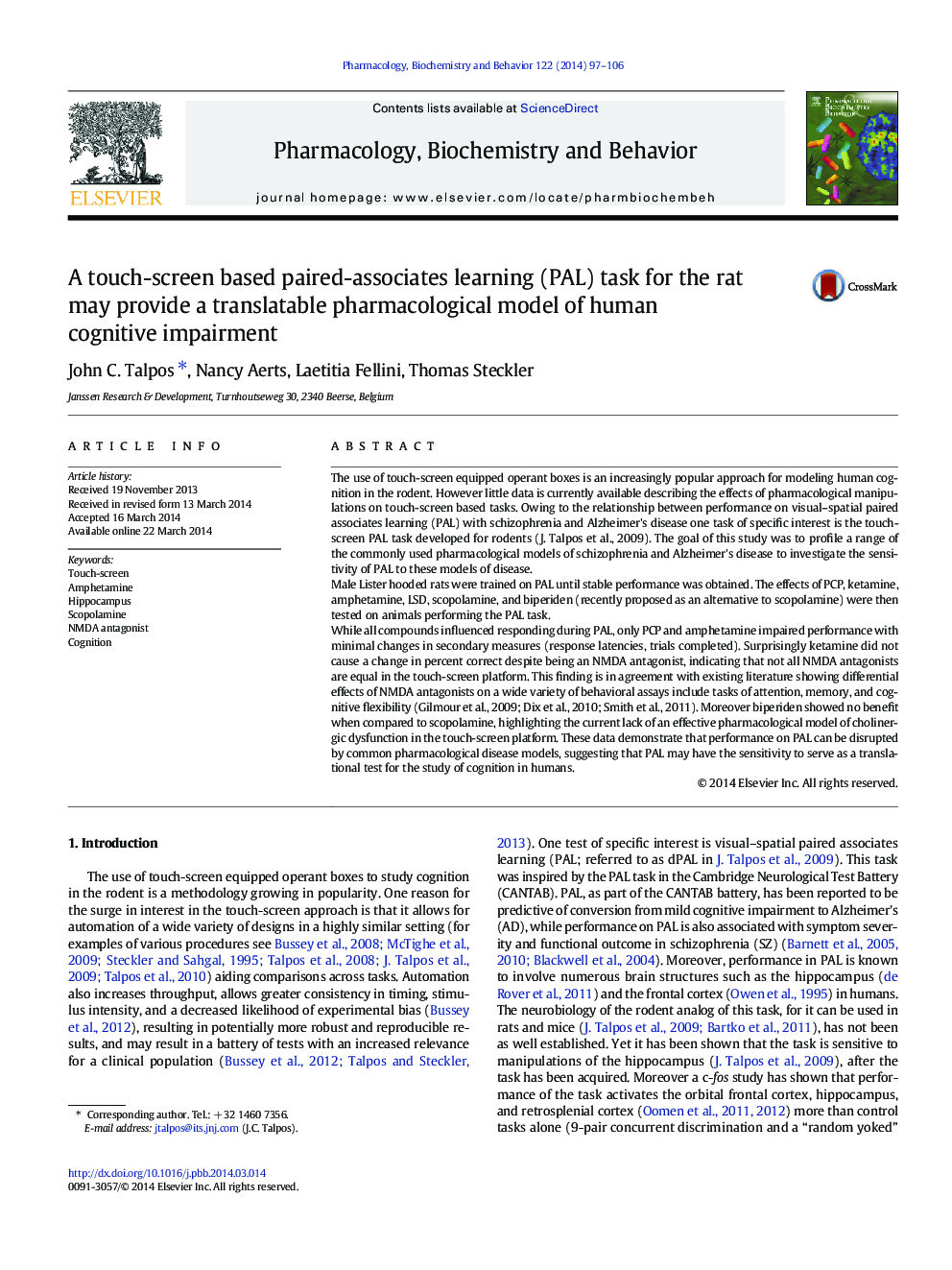| کد مقاله | کد نشریه | سال انتشار | مقاله انگلیسی | نسخه تمام متن |
|---|---|---|---|---|
| 2012875 | 1541862 | 2014 | 10 صفحه PDF | دانلود رایگان |

- Performance on PAL could be disrupted by pharmacological models of disease.
- Common pharmacological challenge models were easily dissociated from each other.
- Amphetamine in PAL may serve as a model of cognitive impairment for compound testing.
- Biperiden was not advantageous over scopolamine as a model of cholinergic dysfunction.
The use of touch-screen equipped operant boxes is an increasingly popular approach for modeling human cognition in the rodent. However little data is currently available describing the effects of pharmacological manipulations on touch-screen based tasks. Owing to the relationship between performance on visual-spatial paired associates learning (PAL) with schizophrenia and Alzheimer's disease one task of specific interest is the touch-screen PAL task developed for rodents (J. Talpos et al., 2009). The goal of this study was to profile a range of the commonly used pharmacological models of schizophrenia and Alzheimer's disease to investigate the sensitivity of PAL to these models of disease.Male Lister hooded rats were trained on PAL until stable performance was obtained. The effects of PCP, ketamine, amphetamine, LSD, scopolamine, and biperiden (recently proposed as an alternative to scopolamine) were then tested on animals performing the PAL task.While all compounds influenced responding during PAL, only PCP and amphetamine impaired performance with minimal changes in secondary measures (response latencies, trials completed). Surprisingly ketamine did not cause a change in percent correct despite being an NMDA antagonist, indicating that not all NMDA antagonists are equal in the touch-screen platform. This finding is in agreement with existing literature showing differential effects of NMDA antagonists on a wide variety of behavioral assays include tasks of attention, memory, and cognitive flexibility (Gilmour et al., 2009; Dix et al., 2010; Smith et al., 2011). Moreover biperiden showed no benefit when compared to scopolamine, highlighting the current lack of an effective pharmacological model of cholinergic dysfunction in the touch-screen platform. These data demonstrate that performance on PAL can be disrupted by common pharmacological disease models, suggesting that PAL may have the sensitivity to serve as a translational test for the study of cognition in humans.
Journal: Pharmacology Biochemistry and Behavior - Volume 122, July 2014, Pages 97-106